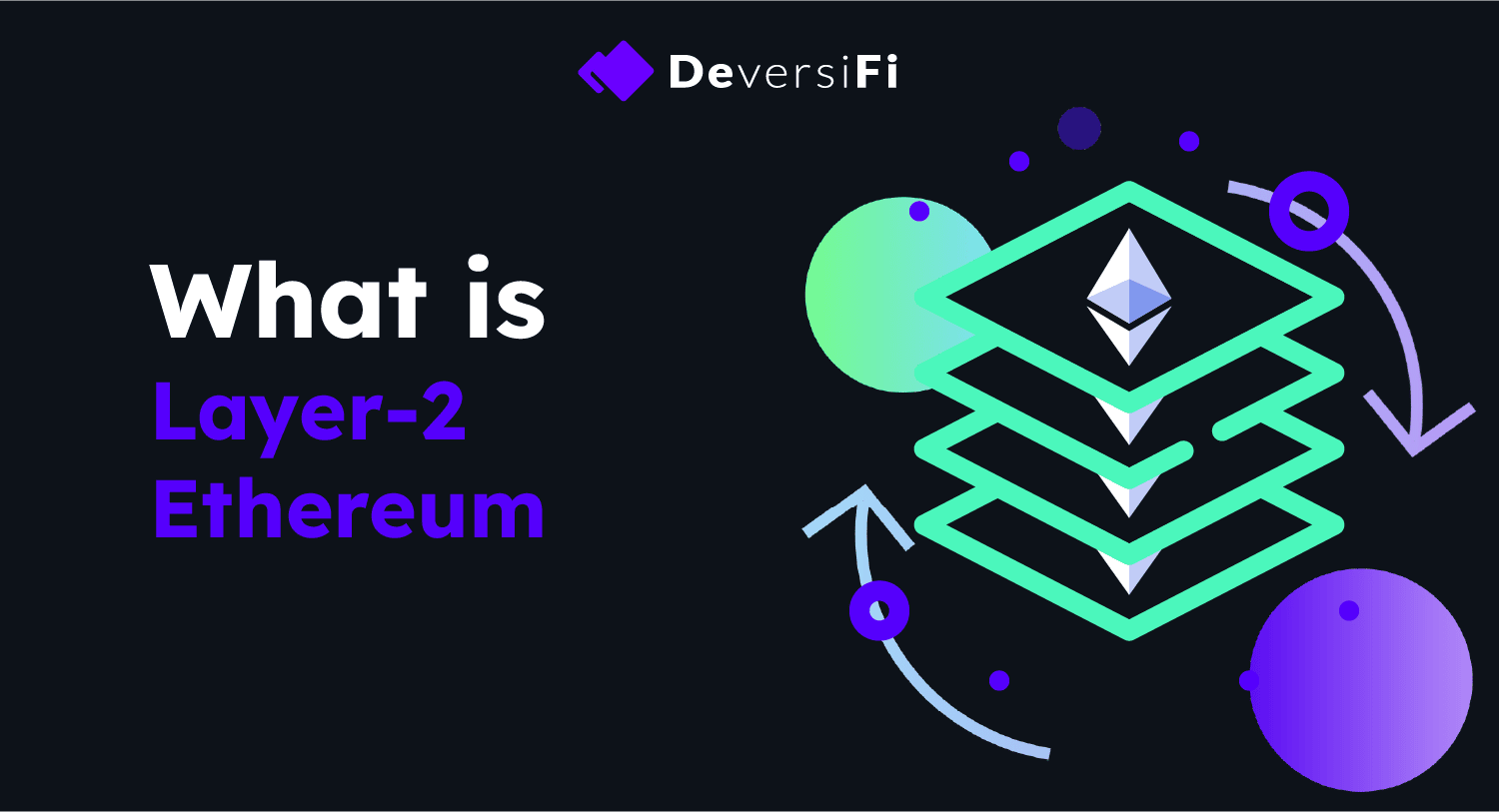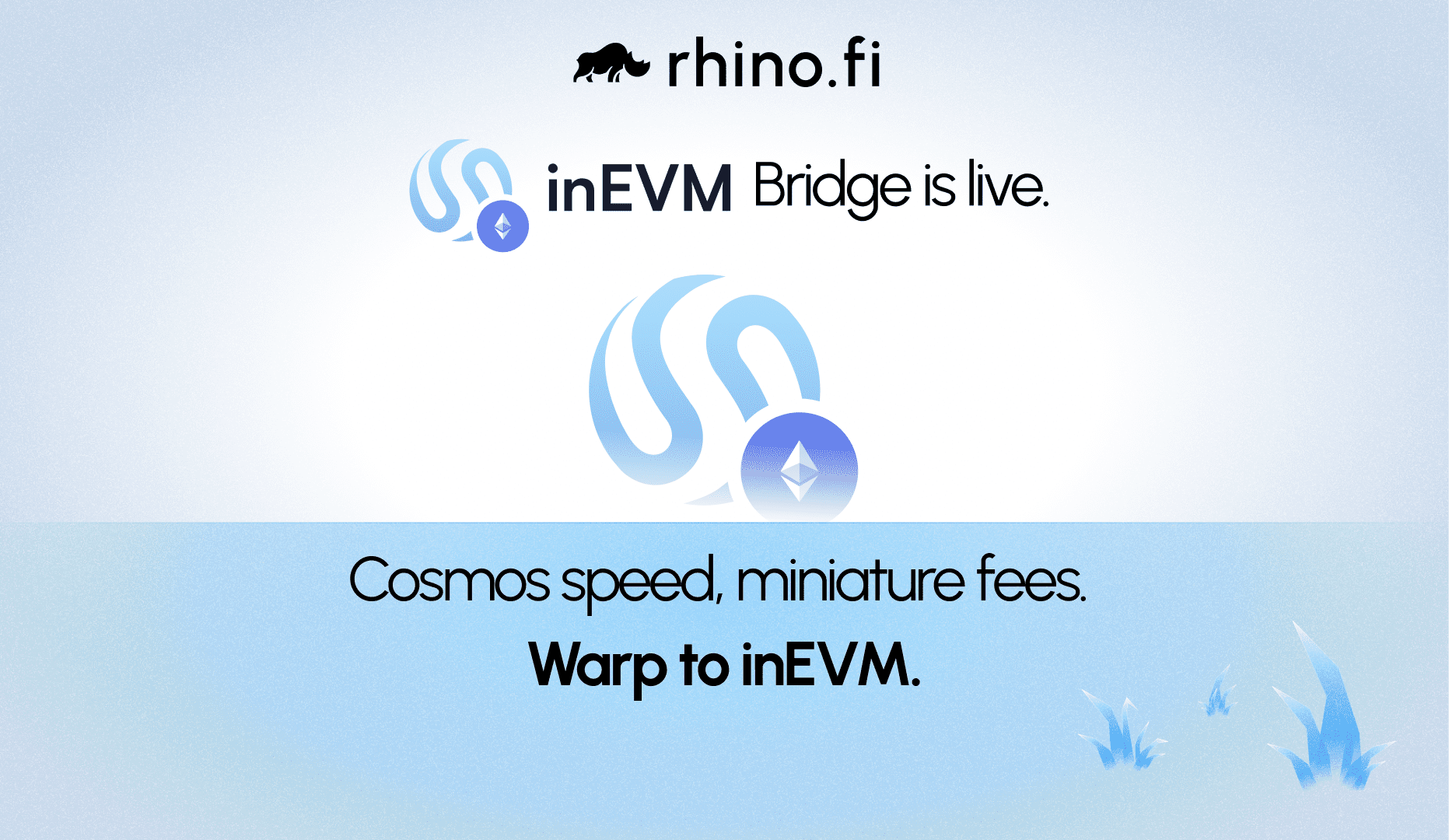2.0.
It’s become a buzzword in itself, right? A cliched expression that’s applied to all kinds of projects, both innovative and not.
But with layer 2 crypto projects, it’s totally on-point.
Layer 2 takes Ethereum and makes it better. Its apps are enabling the main network to scale, and fulfil the very mission the founders set out to achieve. This is the real ‘2.0’ of the whole Ethereum masterplan.
When we talk about layer 2 crypto projects, we’re talking about an ecosystem that has been built on top of the main Ethereum blockchain (layer 1). This ecosystem includes some of your favourite DeFi protocols including Polygon, Arbitrum… and, of course, DeversiFi.
These projects share the main core features of the layer 1 Ethereum blockchain, and are designed to interact with it. Crucially, however, they are able to process transactions independently, and so can lift much of the burden from the main network.
They allow users to make transactions far more quickly than is possible on layer 1, and avoid the hefty fees charged on the mainframe. They give us Ethereum without any of the downsides that its global popularity has created.
In this post we’ll help you understand layer 2 crypto in more detail. We’ll discuss the layer 1 vs layer 2 distinction, and we’ll explain how projects like DeversiFi enable users to make transactions at speed and scale.
Why is Layer 2 so important?
To truly understand what is layer 2 crypto, you need to grasp the need that it is meeting.
Think of the Ethereum blockchain like a motorway (or a freeway, depending on which strand of English you prefer).
The traffic is now so congested that the tailbacks stretch back for miles. Everyone wants to get on, and there’s only so much space. It’s rush hour, every hour.
This problem dates back to Ethereum’s very conception, in 2013. When the founders sat down to brainstorm the project, they wanted to create more than just a native cryptocurrency (like bitcoin, for example).
They wanted to build an entire decentralised ecosystem, one in which app developers could launch anything they fancied and run it on the blockchain, like software on a laptop. The only limit would be the creativity of the app-builders themselves.
Fast forward eight years, and this vision has been a spectacular success.
Ethereum is the most popular blockchain on the planet. Its flagship currency, Ether, is rapidly approaching bitcoin’s market cap. And it now hosts over 3,000 decentralised apps, including games, social networks and of course, trading platforms.
The trouble is, all this traffic is being funnelled through the main Ethereum blockchain.
Hundreds of thousands of people come to trade every day, both ETH and other currencies hosted on level 1, like Tether. At the same time, decentralised games like The Crypto You, a baby-themed play-to-earner, have built viral followings and attracted an army of daily users.
With all this activity, Ethereum is handling well over a million transactions per day. And every single one needs to be recorded.
Yep, each time a transaction takes place, no matter how small, the state – a kind of giant databank which records every single account and balance – has to be updated.
To make matters even more complicated, Ethereum has (up to now at least) validated transactions using a method called proof of work, which relies on an entire network of computers solving complex mathematical puzzles every time a trade takes place. This method is certainly secure, but it’s time-consuming too.
In fact, Ethereum can only handle a maximum of 15 transactions per second, and that’s nowhere near enough. To cope with current demand, it needs be able to handle hundreds.
For everyday users, this brings two specific problems.
Firstly, they often face frustrating delays. Each new entry on the blockchain can take several minutes to process, which isn’t ideal if you’re making a quick trade or playing a game.
But perhaps more importantly, there are the network fees, or gas fees as they are usually called.
Users have to outbid one another for a share of Ethereum’s computing power, which gives bigger users an advantage over smaller ones and creates a punishing price war. The situation has gotten so bad that it can cost hundreds of dollars in fees to make a trade worth only a few bucks.
Ethereum is working hard to address these challenges. Developers are currently working on a project called… yep, you guessed it…Ethereum 2.0. This update will change the blockchain’s validation method and introduce a concept known as sharding, intended to spread the computation workload.
But this new version isn’t expected to be ready until 2023. Users need a 2.0 breakthrough right here, right now.
The answer: layer 1 vs layer 2
Over the last couple of years, a constellation of projects have burst into light around the main Ethereum blockchain.
These apps have been grouped together under the heading ‘layer 2’, with the original blockchain becoming known as layer 1.
Returning briefly to the motorway analogy, these layer 2 crypto projects are like little bypass routes. They take traffic off the motorway and allow the drivers to go straight to their destination, avoiding all the congestion.
The apps inherit many characteristics of the layer 1 network, notably the security features. They can connect with the primary blockchain and utilise its core features, like smart contracts.
However, these solutions are also equipped to act ‘off-chain’ (independently of the main network). Most importantly, they can handle transactions on their own – in other words, take transactions off the main blockchain and execute them autonomously, with no computing constraints.
How exactly do layer 2 projects work?
Each blockchain transaction can be broken down into two parts: the computation stage and the registration stage.
First, the platform computes your transaction. It receives the request, does the math and ensures the whole thing is valid.
Then it updates the blockchain with a record of the transaction, so it is visible to the entire network and can no longer be changed.
With layer 2 projects, this entire process is outsourced.
- First, the layer 2 project takes the transaction off the main layer 1 blockchain.
- Then it carries out the computation itself, validating each transaction using its own proving system.
- Finally it posts the data back on layer 1, for the entire community to see.
Because layer 2 projects are equipped with the same robust security features as the main Ethereum blockchain, they can take transactions and process the data without compromising user details.
However, they are also equipped with specific verification and processing features that enable transactions to be executed in the blink of an eye.
How do layer 2 projects speed up the transaction process?
There are several different types of layer 2 crypto projects, and each of them is designed to handle transactions in different ways.
One of the most common types of L2 project is known as the rollup. DeversiFi is part of this particular family, as are Loopring, ImmutableX, ZKSwap and Aztec, to name but a few of the more famous ones.
The rollup gets its name from the way it takes transactions off layer 1, and rolls them up into big batches. Then it performs the computation and registration process in bulk, before returning to layer 1 and posting a single proof, which acts as a kind of summary for the whole ream of data (you can find out more about rollups, and their main variants, here).
Other types of L2 solution have slightly different approaches. Plasma chains, for example, make miniature copies of the main Ethereum blockchain and execute transactions there.
However, these layer 2 crypto projects all share a common purpose: to make the execution process as smooth as possible and maximise transaction throughput.
DeversiFi, for example, is based on technology that can handle 9,000 transactions per second. In fact the number is restricted only by computing power, not the speed of the blockchain.
Most importantly of all, L2 apps avoid the hustle and bustle of layer 1. This means trades can happen in seconds and fees can be kept to an absolute minimum.
By taking away the transactions, are layer 2 crypto projects competing with Ethereum?
Nope. There’s no layer 1 v layer 2 rivalry whatsoever.
In fact, the founders think this new breed of solutions are crucial to the long-term fate of the Ethereum blockchain. Vitalik Buterin, one of the co-founders of Ethereum, has even said layer 2 is the answer to its scalability problem.
In the eyes of Vitalik and his fellow pioneers, L2 crypto projects will provide the platform for a galaxy of services and exchanges, just as they always intended.
What’s more, layer 2 will allow Ethereum to remain decentralised. By providing a way to meet user demand, this new generation of apps will ensure that the overall project remains in the hands of the community, rather than a controlling elite.
Yes, we will soon see the official version of Ethereum 2.0. And it’s going to be epic. But layer 2 solutions deliver all the core goals of this project, and they will remain fundamental to the whole Ethereum vision.
No matter what happens on the mainframe.
We’ve written a full blog post about our forecast for the coming year, and why we think 2022 will be the year of layer 2. You can check it out here.
You can also read our blog post about trading on layer 2 by clicking here.
About DeversiFi
DeversiFi makes DeFi easy. Swap, Invest and Send without paying Ethereum network fees.
Website: www.rhino.fi
Twitter: https://twitter.com/deversifi
Discord: https://discord.gg/bfNDxZqPSv





